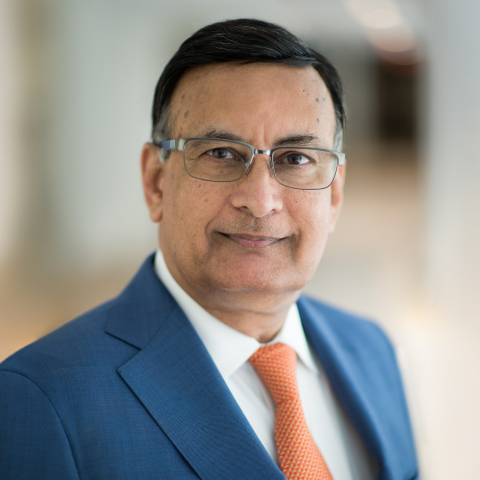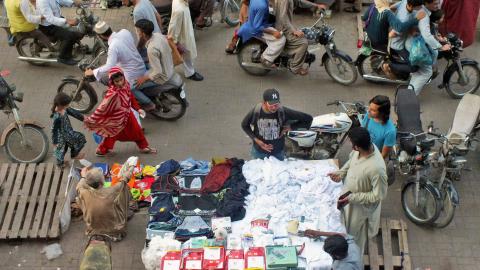Compare last week’s newspaper headlines with those from the 1990s and it would seem that little has changed in Pakistan’s economic circumstances. Currently, as in the 1990s, the country is short of foreign exchange because it imports more than it exports and has to service external debts. The government generates less revenue in taxes than it spends; the State Bank prints notes to finance the government’s expenditures, resulting in rampant inflation; politicians are blaming each other for the faltering economy; there is restiveness in the streets over high prices and unemployment.
The political bickering of the 1990s resulted in the 1999 military takeover by General Pervez Musharraf. This was followed by a short period of attempted fiscal discipline, privatization of state-owned enterprises, and a much publicized effort to increase tax collection. But after the 9/11 terrorist attacks in the United States, Pakistan could once again rely on the inflow of US assistance and the immediate need for economic reform subsided.
In the last four decades, the energies of Pakistanis have been spent on ideological or political issues at the expense of prudent economic decisions. Among those at the helm of affairs, only Nawaz Sharif articulated a clear vision for economic expansion – ‘liberalization, de-regulation, privatization’ – and he, too, was unable to fully implement the reforms he outlined.
A content analysis of statements by most Pakistani presidents and prime ministers reveals less interest in economic matters than their jobs demand. As a result of lack of coherent policies, Pakistan has borrowed from the IMF 23 times since 1958, including 14 times since 1988 and six times since 2000. Turning to the IMF is the economic equivalent of a sick individual being in intensive care. Considering that Pakistan has spent 22 years in the last three decades in the IMF’s intensive care, the country’s economy obviously suffers from some serious ailment.
Pakistan posted GDP growth of a meagre 0.29 per cent in the fiscal year ending June 2023, below the target of 5.0 per cent set last year, and less than the annual population growth rate of 2.5 per cent. The country’s population is increasing faster than its economy is growing, pointing to the depth of the economic crisis. Pakistan has battled budget and trade deficits for years. Its exports and tax revenues have failed to increase sufficiently, and its foreign currency reserves have never risen beyond the value of a few months’ imports.
Economists tell us that each of Pakistan’s economic ills has a remedy. The problem is not the unavailability of solutions but the lack of will on the part of leaders as well as the people to implement them. Most Pakistani politicians prefer to rally their followers through grandiloquence and rhetoric. The popular narrative is that Pakistan is a rich nation impoverished by ‘corrupt’ leaders.
While corruption is indeed a bad thing, it is not the primary reason for fiscal deficits or perennial foreign exchange shortages. Moreover, most countries have figured out a way to investigate, prosecute, and punish corrupt officials without interrupting the economically important projects associated with them. Pakistan, on the other hand, has repeatedly lost credibility with investors because it allows corruption charges to interfere with economic activity.
Contrary to the oft-repeated myth, the country’s problems will not end with the repatriation of billions of dollars of looted Pakistani wealth sitting in foreign banks. First, no one knows for a fact what amounts some Pakistanis have stashed abroad, legally or illegally. The experience of the last four years has made it clear that getting a foreign government to appropriate someone’s property and handing it over is not easy.
Similarly, the attempt by some to solve revenue shortages through donations by individuals, such as was attempted in the ‘Qarz Utaro, Mulk Sanwaro’ campaign of the 1990s and the Dam Fund created by a discredited former chief justice more recently, also does not work.
The solution to Pakistan’s economic problems will have to be found within established economic parameters – increased productivity, better managed state finances, and global competitiveness.
In the short term, the country will have to keep its promises with the IMF to reduce the budget deficit and improve export performance. Many Pakistani public and media figures misrepresent the IMF’s requirements. The IMF does not raise electricity tariffs or fuel prices. It just asks that the government reduce the shortfall between its income (which comes from direct and indirect taxes) and its expenditure (which includes subsidies from the treasury for fuel and electricity.) The increase in fuel and electricity prices people complain about is a result of the diminution of the subsidy.
The government could also reduce other expenditures and undertake tax reform to increase its revenues. Income from several sectors, including agriculture, is currently not taxed. Agriculturists have resisted the idea of taxing their income for decades. But the need to tax this key sector is equally persistent.
Equally important is the need for the government to shed state-owned enterprises that consistently lose money. Privatizing them will not amount to selling the family silver, as some in the media repeatedly proclaim. It will reduce the government’s liabilities and free the assets tied in these unproductive enterprises for more productive deployment.
In the long term, Pakistanis must embrace economic pragmatism and do away with ideological preoccupations that have kept productivity down and foreign investment away. Religious militancy, calls by clerics to boycott certain products on sectarian grounds, and rulings by judges that interfere with investment contracts (remember Reko Diq?) are not conducive to economic advancement.
Economic pragmatism would lead Pakistan to open trade with all countries, especially immediate neighbours, notwithstanding political or other disputes, and invest in building human capital that would expand the country’s technological base, leading to economic modernization. Until then, the country will only muddle through, from one IMF programme to the next.




















